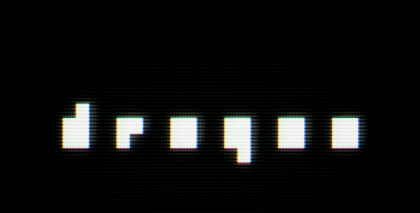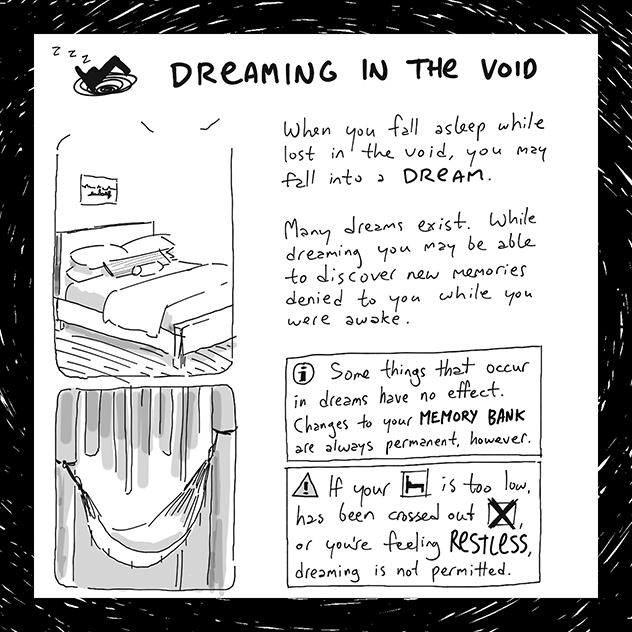Mike Meginnis has written a couple of fictional videogame stories. I like them both a lot.
- Welcome to droqen's forum-shaped notebook. Please log in.
This section allows you to view all posts made by this member. Note that you can only see posts made in areas you currently have access to.
#1863
Fictional Games / The Dowager of Bees
May 02, 2022, 09:08:58 PM
A short story from China Miéville's Three Moments of an Explosion
#1864
Fictional Games / Lucky Wander Boy
May 02, 2022, 09:07:55 PM
This novel is about the protagonist's search for an arcade game which he played before as a child, Lucky Wander Boy. He -- the character -- writes about the game and the experience of playing it, while also writing about his experiences with other real games.
#1865
Fictional Games / The Starless Sea
May 02, 2022, 09:05:18 PMQuote from: p447-448It felt like the right decision at the time but you know, you wonder. What might have happened next?
That's what I started working on, even though it was unplanned. I wasn't working, at all, for a while there and I didn't know what I wanted to do, I didn't know what I wanted at all so I kept thinking about what is it that I want and kept coming back to telling stories in game form. I got to thinking all of this might be a halfway decent game if it were a game. Part spy movie, part fairy tale, part choose your own adventure. Epic branching story that doesn't stick to a single genre or one set path and turns into different stories but it's all the same story. I'm trying to play with the things you can do in a game that you can't do in a book. Trying to capture more story. A book is made of paper but a story is a tree.
You meet someone in a bar. You follow them or you don't.
You open a door. Or you don't.
Either way the point is: What happens next?
It's taking an absurd amount of notebooks full of possibilities but it's getting somewhere.
#1866
Close reading / Re: Ficciones
April 30, 2022, 08:22:07 AM
The Lottery in Babylon
Similar vibes to The Circular Ruins... there is a setup, but I have no feelings about it afterwards
Similar vibes to The Circular Ruins... there is a setup, but I have no feelings about it afterwards
#1867
Fashion (Clothing) / comprehension and boredom; 'out of fashion'
April 26, 2022, 12:52:45 PM
See No timeless fashions.
There is an ever-evolving culture which surrounds each of us. What do we expect? There is always A Pattern Language though we don't talk about it as such: things we have accepted as reality or shorthands to it. Justice, karma, employment. We can perceive our cultural patterns through the focus of words, though they are imprecise. Words fall out of fashion slower than patterns do. Words are just pointers.
What is the game design equivalent of 'foreshadowing'? Consider a deck of cards from which one draws a hand of cards: this hand of cards gives a sense of the composition of the deck. In a sense this is foreshadowing; we are given a hint, a piece, of a larger conclusion: the understanding of such a system.
Is technology accelerating fashion? Accelerating boredom?
The internet, the great network of humanity, is a catalyst for connection and change, and our symbiotic relationship to it -- no, not symbiotic, the internet is composed of nothing but people, is a family member symbiotic to a family? -- is growing stronger at a constant rate.
There is an ever-evolving culture which surrounds each of us. What do we expect? There is always A Pattern Language though we don't talk about it as such: things we have accepted as reality or shorthands to it. Justice, karma, employment. We can perceive our cultural patterns through the focus of words, though they are imprecise. Words fall out of fashion slower than patterns do. Words are just pointers.
What is the game design equivalent of 'foreshadowing'? Consider a deck of cards from which one draws a hand of cards: this hand of cards gives a sense of the composition of the deck. In a sense this is foreshadowing; we are given a hint, a piece, of a larger conclusion: the understanding of such a system.
Is technology accelerating fashion? Accelerating boredom?
The internet, the great network of humanity, is a catalyst for connection and change, and our symbiotic relationship to it -- no, not symbiotic, the internet is composed of nothing but people, is a family member symbiotic to a family? -- is growing stronger at a constant rate.
#1868
Close reading / Re: Ficciones
April 26, 2022, 12:46:13 PM
The Circular Ruins
I get what it's doing, but I did not think much of it.
I get what it's doing, but I did not think much of it.
#1869
Close reading / Re: Goodbye, Eri
April 24, 2022, 09:45:01 AM"Once is a mistake, twice is jazz."
#1870
Close reading / Re: Goodbye, Eri
April 24, 2022, 09:44:48 AM
Contains spoilers.
1st Read: What happened? What was that all about? It was so confusing.
Reflection: The ending... was it fictional or did it really happen?
Later, I was thinking about how a work of art is just a wrapper of devotion around elements of meaning, to give those expressed meaning more gravitas. (e.g. If the author spent so much effort to deliver this message, then it must be more important than it seemed upon first glance?)
I thought of a game which tells you upfront its meaning, then says it again at the end, the same message but with that new context of gravitas the second time. "I already told you this but now look at it again, you thought it wasn't important but now you do."
Then I thought back to the ending of Goodbye, Eri. The first explosion in DEAD EXPLOSION MOTHER seemed like a joke, like an error, like something silly, something to grow out of and fix.
The second explosion said, no, it was perfect.
1st Read: What happened? What was that all about? It was so confusing.
Reflection: The ending... was it fictional or did it really happen?
Later, I was thinking about how a work of art is just a wrapper of devotion around elements of meaning, to give those expressed meaning more gravitas. (e.g. If the author spent so much effort to deliver this message, then it must be more important than it seemed upon first glance?)
I thought of a game which tells you upfront its meaning, then says it again at the end, the same message but with that new context of gravitas the second time. "I already told you this but now look at it again, you thought it wasn't important but now you do."
Then I thought back to the ending of Goodbye, Eri. The first explosion in DEAD EXPLOSION MOTHER seemed like a joke, like an error, like something silly, something to grow out of and fix.
The second explosion said, no, it was perfect.
#1871
Close reading / Goodbye, Eri
April 24, 2022, 09:40:58 AMRegarding Tatsuki Fujimoto's Goodbye, Eri
#1872
Primordial soup / SANDCASTLE LIFE
April 24, 2022, 09:33:12 AM
Virtual paradise in the hands of the machine
When I make a videogame it is a world imprisoned in computers
In some way, Apple's frustrating policy of deleting old projects is in touch with reality, is honest:
Digital universes are ephemeral, kept alive only as long as they can float in an ocean of living circuits.
The custody of such an ocean has become a humanity-wide project,
Something which we created and which now burdens us,
Creates work for people,
Gives us purpose.
Videogames are this artificial purpose made into art.
When I make a videogame it is a world imprisoned in computers
In some way, Apple's frustrating policy of deleting old projects is in touch with reality, is honest:
Digital universes are ephemeral, kept alive only as long as they can float in an ocean of living circuits.
The custody of such an ocean has become a humanity-wide project,
Something which we created and which now burdens us,
Creates work for people,
Gives us purpose.
Videogames are this artificial purpose made into art.
#1873
Close reading / Re: Ficciones
April 24, 2022, 08:31:11 AM
Pierre Menard, Author of the Quixote
Note: contains spoilers for this short story, as well as for a pair of films from 2013 and 2016.
Set upon a background of blinding cyan, we can read 30 translations of Matsuo Basho's Frog Haiku. Each translation is necessarily imperfect and incomplete, and carries a little of the translator in it.
Borges' short story is reminiscent of a pair of films* which are about the non-use of time travel: not time travel as a tool for overcoming, but as a lens for the appreciation of life; with the power to change things, what if we left them exactly as they are?
I really enjoyed this one, the surreal take on reinterpretation of a work, as well as this line...
It's an absurd curiosity to imagine reading a book as though it were written by a different author, but considering making the attempt is enough to unlock a new way of thinking. What if we applied that new way of thinking to the way things actually are? Partake of a work of art as though it were created by the person who in fact created it, but with the same mental consideration as if that were an equally absurd act to imagining it were created by some other person. (Or persons and/or process(es).)
What could we learn?
Note: contains spoilers for this short story, as well as for a pair of films from 2013 and 2016.
Set upon a background of blinding cyan, we can read 30 translations of Matsuo Basho's Frog Haiku. Each translation is necessarily imperfect and incomplete, and carries a little of the translator in it.
Borges' short story is reminiscent of a pair of films* which are about the non-use of time travel: not time travel as a tool for overcoming, but as a lens for the appreciation of life; with the power to change things, what if we left them exactly as they are?
I really enjoyed this one, the surreal take on reinterpretation of a work, as well as this line...
Quote[This] technique, requiring infinite patience and concentration, encourages us to [..] read Mme. Henri Bachelier's Le jardin du Centaure as though it were written by Mme. Henri Bachelier. This technique fills the calmest books with adventure.
It's an absurd curiosity to imagine reading a book as though it were written by a different author, but considering making the attempt is enough to unlock a new way of thinking. What if we applied that new way of thinking to the way things actually are? Partake of a work of art as though it were created by the person who in fact created it, but with the same mental consideration as if that were an equally absurd act to imagining it were created by some other person. (Or persons and/or process(es).)
What could we learn?
*Spoilers: the films are Arrival, and the ending of About Time


